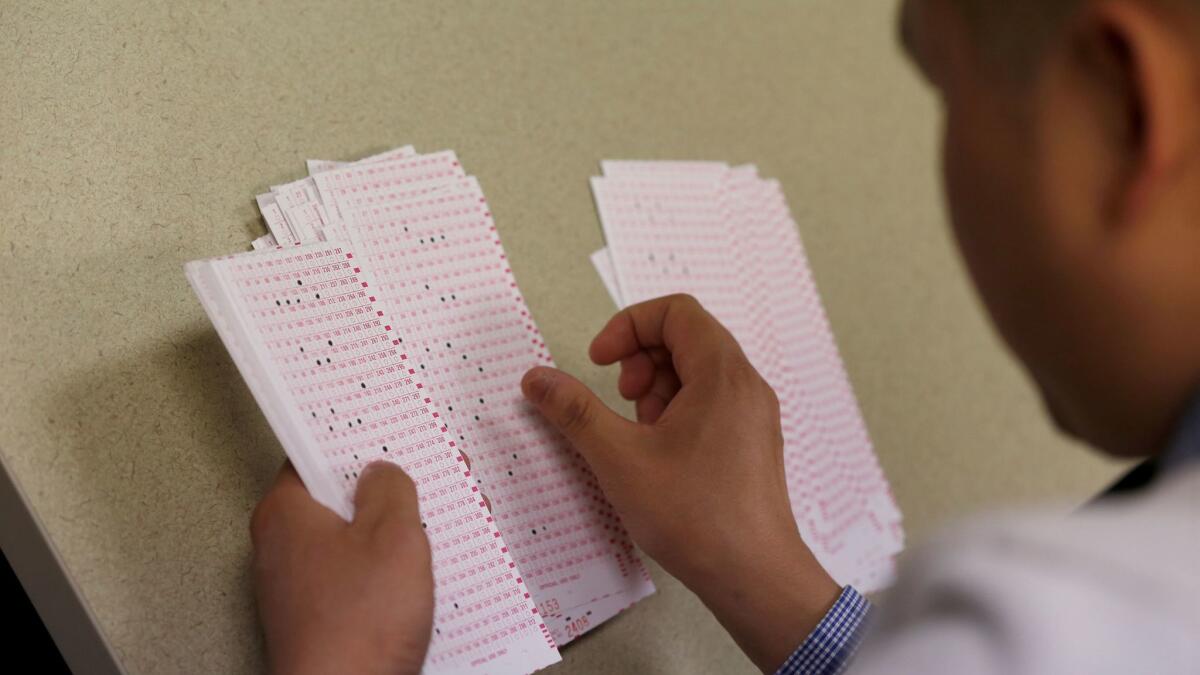Column: Political Road Map: This is why it takes so long to count votes in California

In an era when there’s almost nothing that can’t be found out quickly, the long wait for final results from an election in California feels interminable. And yet, there’s a pretty simple reason why it takes so long to count all the votes.
California is not just home to more voters than any other state in the U.S. But it also has more election laws designed to maximize a voter’s chances of casting a ballot.
“We don’t put up any of the barriers that you see in other states,” said Kim Alexander, president of the nonpartisan California Voter Foundation.
Full California election results »
Lawmakers through the years have taken a decidedly pro-voter approach when enacting new election laws, none more consequential than the expanded use of absentee voting. In some states, you still need a good reason to not show up in person on election day.
Permanent absentee voting, which became open to everyone in 2002, is now used by more than 52% of all California voters.
Absentee ballots, though, aren’t always cast early. Some voters deliver them to polling places on election night, and others put them in the mail at the last minute. But that’s OK under a new state law allowing ballots postmarked by election day to be counted if they arrive no more than three days late.
In California’s most proactive counties, election officials reach out to voters who forget to sign the absentee ballot envelope. If the voter can be contacted in time, the ballot is counted.
Election day has become election month in California »
Then there are provisional ballots, designed for instances when a voter’s registration status can’t quickly be verified at a polling place. While some believe that local election officials need more guidance on the use of provisional ballots, state laws were designed to honor the voter’s intent as often as possible.
If someone shows up at the wrong polling place, and thus votes on some races in which they’re not eligible, election officials will “remake” that ballot to remove the ineligible choices and count the others. A federal report last year showed that some states, including Michigan and Wisconsin, don’t allow out-of-precinct provisional ballots to be counted in any races.
California is moving in the other direction. Under a sweeping election law signed by Gov. Jerry Brown in September, counties will swap ballots of any voters who show up in the wrong part of the state. Another new law will allow anyone you choose to turn in your ballot.
We don’t put up any of the barriers that you see in other states.
— Kim Alexander, president of the nonpartisan California Voter Foundation.
As more ballots show up on election day or later, officials spend more of their time verifying documents in the days and weeks afterward, thus delaying the final vote tally. Recent data suggest almost four in 10 California ballots cast on Nov. 8 were not counted by the time the sun rose on Nov. 9.
Elections are not the most expensive government service, but they also aren’t cheap. And state government, more often than not strapped for cash in recent years, hasn’t always required local officials to use the entire array of voting options available. Doing so would trigger a mandate that then must come with the money to carry it out.
Advocates say pro-voter laws are a hollow victory if they’re not used. Voter participation in California, while no doubt higher this fall than in other elections, has lagged in recent years.
“We live in a state with pro-voting laws,” said Alexander. “But we don’t live in a state with a pro-voting culture.”
Follow @johnmyers on Twitter, sign up for our daily Essential Politics newsletter and listen to the weekly California Politics Podcast
ALSO:
Californians have a long, love-hate relationship with ballot propositions
More Californians will vote by mail under a new law signed by Gov. Jerry Brown
More to Read
Get the L.A. Times Politics newsletter
Deeply reported insights into legislation, politics and policy from Sacramento, Washington and beyond. In your inbox three times per week.
You may occasionally receive promotional content from the Los Angeles Times.











